By Stephen Meyers, Associate Professor of International Studies and Law, Societies & Justice Director, Center for Global Studies, University of Washington
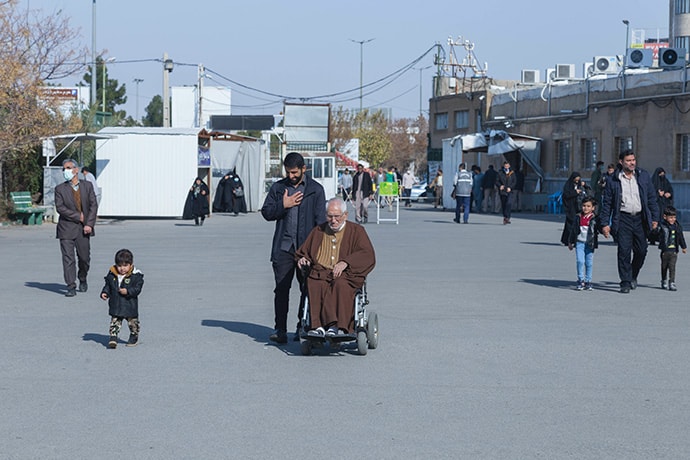
Man in wheelchair, Iran. Photo: Javad Esmaeili, Unsplash
Persons with disabilities and older persons, defined as 60 years of age and above, represent two of the most significant constituencies for achieving global development. Less than 1% of official foreign aid, however, reaches persons with disabilities and older persons despite their human right to development being clearly defined in international law and policy. The Convention on the Rights of Persons with Disabilities, which was adopted by the United Nations in 2006 and currently has 186 States-Parties, mandates the inclusion of persons with disabilities in all aspects of development through Article 32 on International Cooperation. In regards to older persons, Michelle Bachelet used her term as UN High Commissioner for Human Rights to make the argument that “older people should be able to actively participate and contribute to sustainable development,” and their marginalization from development constitutes a human rights violation.
The call to include persons with disabilities and older persons in international development, however, is not only a human rights issue, but also basic common sense: Meaningful development cannot be achieved when certain groups of people are systematically excluded, especially when those excluded groups represent two of the world’s largest minority groups. Indeed, the World Health Organization estimates that 15% (1.3 billion) of the global population are people living with some form of disability, and the UN Development Programme (UNDP) estimates that currently 10% (800 million) of the global population are people over 60, a share of the population that is predicted to double by 2050 based on increases in life expectancy and a falling fertility rate. The majority of both groups live in developing countries. To that end, the 2030 Agenda for Sustainable Development, which was adopted by the United Nations General Assembly in 2015, was developed to address this situation. The 2030 Agenda specifically states “the vulnerable must be empowered” and specifies “children, youth, persons with disabilities, people living with HIV/AIDS, older persons, indigenous peoples, refugees and internally displaced persons and migrants” as populations requiring the greatest attention. In fact, the very motto “Leave No One Behind” of the Sustainable Development Goals was formulated with both groups in mind.
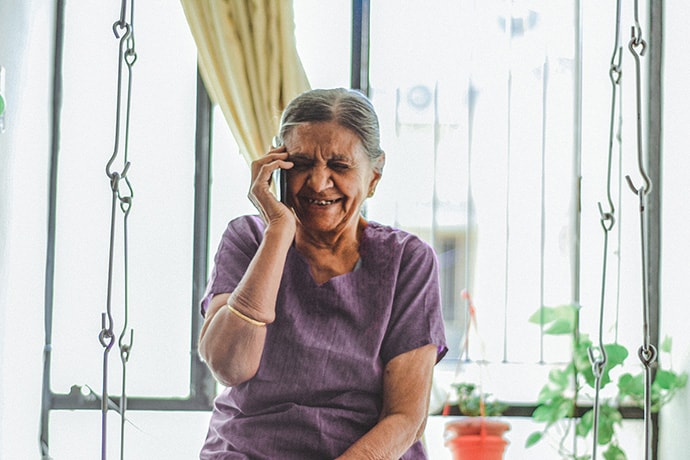
Elderly woman, India. Photo: Dave Akshar, Pixabay
Despite being clearly recognized in human rights law and being integrated into the SDGs, the UN Flagship Report on Disability & Development and similar reports on older persons, including the HelpAge International Ageing & Development Report and UNDESA Income Poverty in Old Age Issue Paper, have found that throughout the world, persons with disabilities and older persons face constant and disproportionate barriers in achieving food security, health services, gaining meaningful employment, accessing education, and achieving virtually all other SDGs. Given their numbers, it should be obvious that addressing development goals such as ending hunger, ensuring health and well-being, promoting economic growth, and eliminating illiteracy are impossible if such a large chunk of the population, the majority of whom constitute the poorest of the poor, are left out.
Over and again, research has shown that persons with disabilities and older persons are twice as likely to live under the poverty line than persons without disabilities or people below 60 years of age. A full 90% of persons with disabilities and over 80% of older persons, for example, fall below the international poverty line of $2.15 a day in Sub-Saharan Africa, in comparison to just 41% of their non-disabled and younger peers in the region. The exclusion of both groups has been exasperated by both large and small development organizations that have failed to recognize them as important parts of their constituencies, much less develop the policies and practices that concretely address the barriers persons with disabilities and older persons face in participating in development. Global development organizations, however, can being to address these barriers by 1) recognizing persons with disabilities and older persons as key constituents; 2) providing a seat at the table for persons with disabilities and older persons in planning, implementation, and evaluations; and 3) taking responsibility for inclusion by adopting a disability and age-lens.
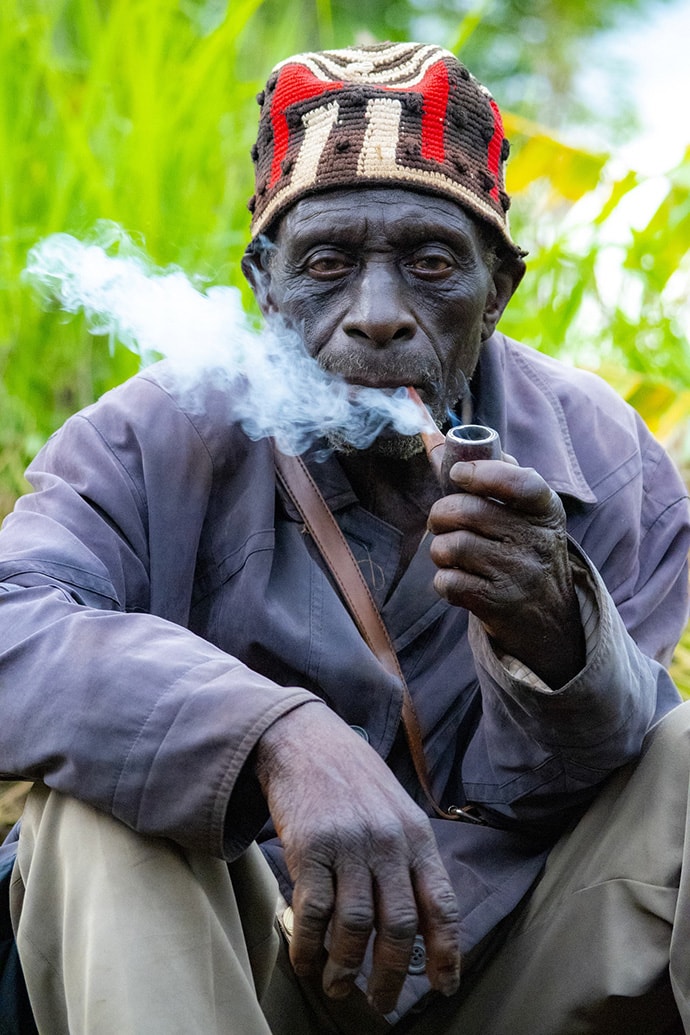
Elderly African man. Photo: Bertin23, Pixabay
One of the major barriers that persons with disabilities and older persons face is invisibility, despite their significant numbers. “Invisible” is the very term UN Human Rights Chief Bachelet used in reference to older persons in 2022 when she made the call for increased international human rights protections for older persons, including a new UN human rights treaty specifically for older persons. Similarly, UN Enable, the inter-agency working group for persons with disabilities, identifies “invisibility” as one of the greatest barriers for disability inclusive development. In both cases, persons with disabilities and older persons often remain invisible simply because organizations are not looking for them and rarely provide the access and accommodations that would make it possible for either group to access the opportunities they are providing.
During a study I coauthored on the inclusion of persons with disabilities by small and medium sized international NGOs, for example, the administrator of an education NGO working in Africa defensively explained that the reason her organization had made no efforts to ensure the school her organization supported was accessible or to ensure that persons with disabilities could participate in the application process for the scholarships they provided (i.e. alternative formats for persons with visual impairments and sign language interpretation for interviews for Deaf persons) was because “There honestly isn’t a huge population [of disabled people]. I mean, [country] is really small. So, in terms of different disabilities, it’s not a huge population… There’s just not a ton,” thus there was no need to have accommodation and inclusion policies in place. As a result, in a country quite literally known for disability as a result of a history of violence, her organization’s school had never had a student with disabilities.
Older persons too, face similar barriers. For example, sexual and reproductive health NGOs are notorious for failing to include older people in activities, such as HIV testing and awareness raising campaigns, often justifying the exclusion on the basis older people are not sexually active, despite research put out by UNAIDS that show older people (and persons with disabilities) constitute one of the most significant risk groups. In order to address invisibility, development organizations need to actively invite persons with disabilities and older persons to participate.
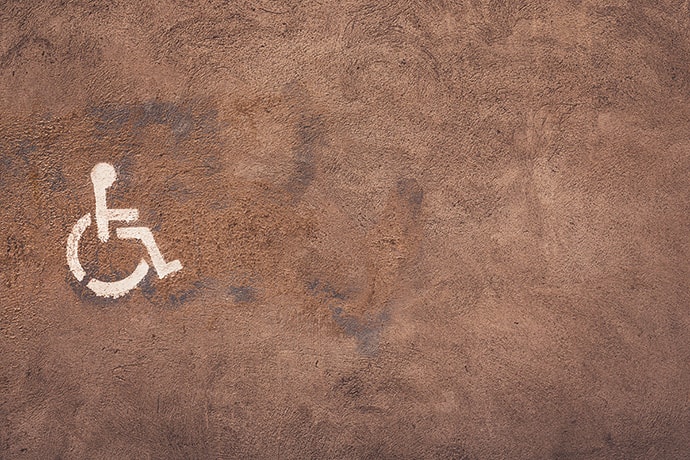
Disabled access sign. Photo: Mossholder, Pixabay.
A second common barrier is that development organizations do not feel they have the expertise to include persons with disabilities and older persons in their projects and programs. This lack of expertise, however, can be addressed through the type of participatory planning processes that policymakers and development organizations have been using for decades by working with stakeholders to ensure their initiatives work at the local level. Expertise in disability and age-inclusion lies with persons with disabilities and older persons themselves, therefore development organizations need to begin including organizations of persons with disabilities (OPDs) and older people’s associations (OPAs) as stakeholders in planning, implementation, and evaluation. Luckily, OPAs are common throughout the world and easier than ever to connect to. Internationally, there are networks such as the International Disability Alliance, which represents over 700 national-level organizations in over 200 countries. Many of these national organizations, which include networks such as associations of the deaf, blind, parents of children with intellectual disabilities, and so forth, have chapters at the local level, where grassroots disability associations represent people at the neighborhood or village level. There is similar representation globally, nationally, and locally for older persons. International networks, such as the International Federation on Ageing, bring together national-level OPAs from around the world.
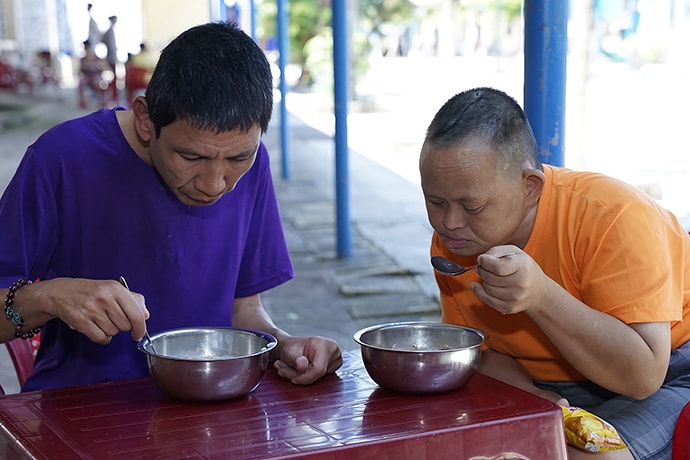
Intellectually disabled men, Vietnam. Photo: Minh Châu Ngọc, Pixabay, Vietnam
At the local level, OPAs proliferate. A recent UN Economic Commission for Europe guidance note, for example, points out that in many EU countries, more than 90% of communities have an older people’s council. Similarly, outside of Europe, older people’s associations are blooming. Vietnam, for example, boasts over 3,000 “intergenerational self-help groups” of senior citizens at the commune level throughout the country, and in Jamaica, where I have been doing research, the Council for Senior Citizens supports dozens of senior citizen groups in every corner of the island. These organizations are resources that not only can disseminate information to their members, but actively advise on access and inclusion. For example, they can help ensure that information materials are in multiple formats and media is accessible to all. All too often, information about development opportunities are inaccessible. Persons with low vision cannot read flyers or posters, for instance, or social media campaigns fail to reach older persons. Disabled persons organizations and older persons organizations, however, are addressing barriers on a daily basis, and can bring a vital disability and age-perspective into policymaking, planning, implementation, and evaluation through partnerships with development organizations.

Person in wheelchair. Photo: Steve Buissine, Pixabay
Lastly, every development organization needs to take responsibility. Perhaps the greatest barrier persons with disabilities and older persons face in achieving their right to development is that many development organizations simply believe that persons with disabilities and older persons are someone else’s responsibility. Part of this stems from “groupism,” wherein organizations think of their constituents as some sort of homogenous group—refugees, migrants, agricultural workers, persons living with HIV/AIDS, and so forth—and therefore mutually exclusive from other groups, such as persons with disabilities or older persons, whom they erroneously assume are somehow separate, rather than intersecting with their target constituency. This assumption is, obviously false. Research on refugees by HelpAge International and Humanity & Inclusion (aka Handicap International), for example, found that as many as one-third of Syrian refugees living in Jordan and Lebanon were either disabled or older, yet many basic refugee services in those areas, such as those providing access to food and shelter, were inaccessible simply because they did not fit the “normative” view of a refugee that refugee organizations planned for. That meant that humanitarian organizations and others were failing to serve enormous numbers. Part of this failure is based on the assumption that even when barriers occurred, it was someone else’s responsibility to resolve them. In the same study on small and medium-sized NGOs that I cited above, an administrator of an NGO providing healthcare, including reproductive healthcare, in South Asia explained that her organization’s clinic had never seen it as necessary to provide accommodations to persons with disabilities or older people because families typically provide that for their relatives. When pressed further, she acknowledged that the sensitivity of some of the healthcare her organization provided may prove a barrier for people who could not visit unassisted.
While it is true that Deaf parents often rely on their children to interpret or older persons rely on younger relatives to assist with mobility, having to rely on their assistance in private medical matters, such as reproductive health, constitutes a major barrier. These barriers will persist until development organizations, especially those that claim a human rights approach and align themselves with the SDGs, take responsibility to ensure equal access and embrace the vision of “Leave No One Behind.”